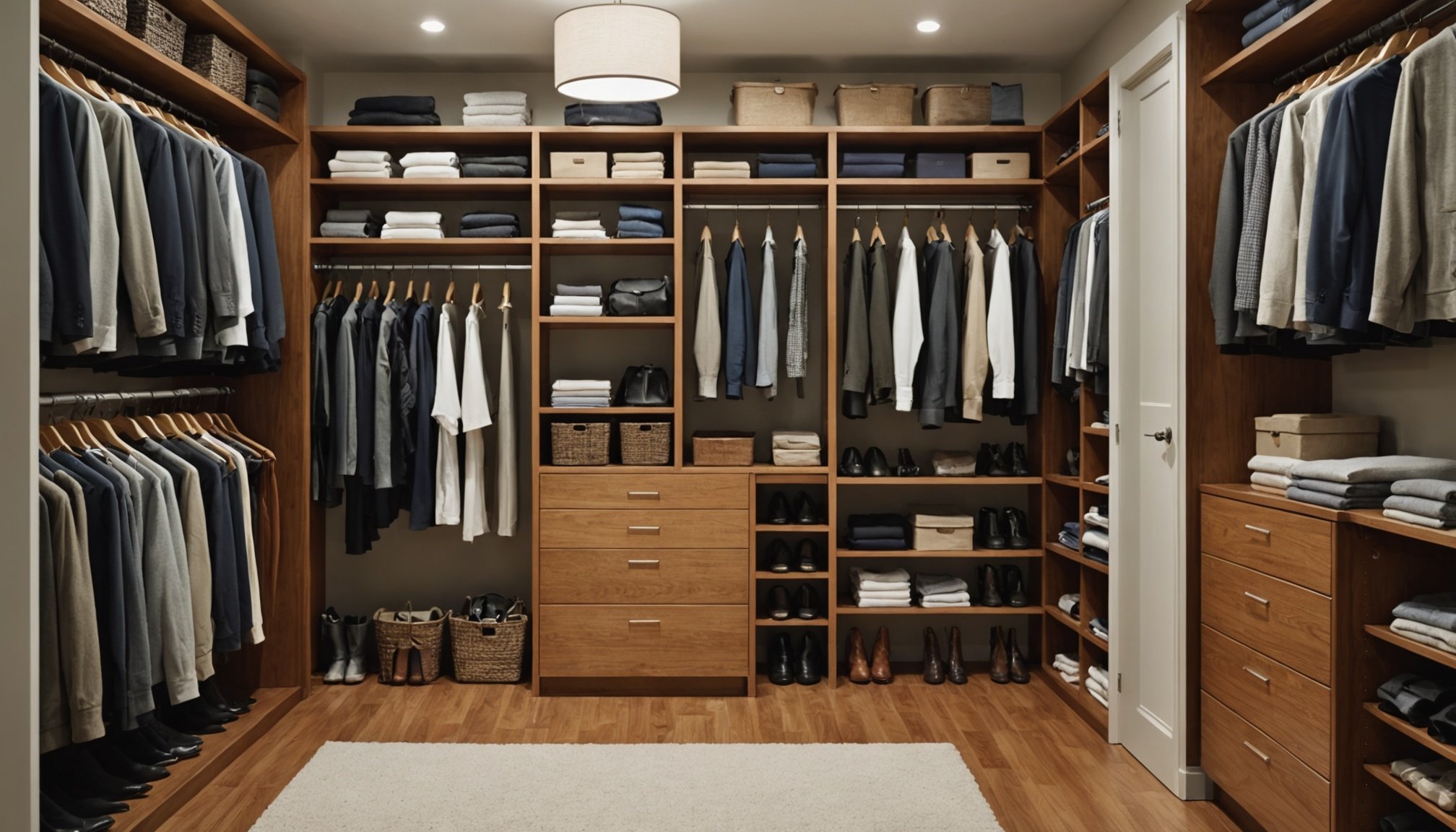In a busy world where time is often a scarce commodity, efficiency becomes the key to smoother daily operations. Your closet is no exception. Once a simple storage space, it has evolved into a strategic command center for clothing organization. Whether you’re dealing with a crowded walk-in or a compact wardrobe, effective closet management can enhance your lifestyle, reducing daily stress and making your morning routine a breeze. In this article, we’ll explore how to maximize closet efficiency using systems and techniques that are both practical and innovative.
Understand Your Space and Needs
Before diving into the nitty-gritty of organizing your closet, begin by understanding the space you have and the needs it must fulfill. Every closet, regardless of its size, comprises potential waiting to be unlocked. Consider the available space, its dimensions, and any existing storage structures like shelves or hangers. Ask yourselves: What type of items do we most frequently store? Is it seasonal clothing, everyday clothes, or a mix of both?
Also to read : What are the key accessories to elevate a simple outfit for a night out?
Once you’ve assessed the space, catalogue your belongings. Sort clothes by category—casual, formal, seasonal, and so on. This approach not only helps visualize the volume but also aids in identifying storage necessities. As you sift through, there’s an opportunity to declutter. Don’t hold onto what no longer serves you. Donate or recycle where possible, freeing up room for items you cherish.
With a clear understanding of the space and the items to store, you begin to see possibilities for organization. Shelves can become homes to neatly folded sweaters, while hanging rods are perfect for wrinkle-prone garments. Drawer dividers can compartmentalize accessories, and bins can store infrequently used items like vacation wear. Tailoring solutions to your needs ensures that every inch of space is utilized effectively.
Additional reading : Discover verified escorts with real reviews on escort babylon
Design an Efficient Storage System
Designing an effective storage system is at the heart of maximizing closet efficiency. This involves more than just arranging your clothes and shoes; it requires strategic planning and creativity. Begin by assigning roles to different areas of your closet. For instance, shelves can host folded t-shirts and jeans, while rods can accommodate hangers with jackets or dresses.
Bins and baskets are invaluable for organizing smaller items such as scarves, hats, or belts. Label them for quick identification. Using uniform hangers not only creates a cohesive look but also maximizes space by keeping everything aligned. Consider double-tier hanging rods to create layers for shirts and pants.
For those with a penchant for DIY solutions, adjustable shelving or modular units offer a flexible approach, allowing you to rearrange as needs change. A dedicated shoe rack can transform a cluttered floor into a tidy, easy-to-navigate setup. Think vertically; utilizing wall space for additional hooks or pegboards can help keep items like ties or handbags accessible yet unobtrusive.
A functional storage system should not only be practical but also visually appealing. Aesthetics play a role in encouraging upkeep. Therefore, maintain a color-coded system or align clothing by type or season. When your clothes are stored logically, the daily ritual of choosing an outfit becomes seamless, saving time and reducing decision fatigue.
Evaluate and Maintain Organization Regularly
Establishing an organizational system is only the beginning. Like any well-oiled machine, your closet requires regular maintenance to function optimally. Evaluate your setup every season to ensure it aligns with your current needs. Store away out-of-season clothing to make space for more relevant items. Rotate clothes to the front of your closet as seasons change, placing less-used items in the back or on higher shelves.
Create a habit of routinely auditing your clothes and items. Discard or donate clothing that no longer fits, is out of style, or hasn’t been worn in over a year. This not only liberates much-needed space but keeps your wardrobe relevant.
Maintaining organization also means addressing disruptions promptly. If you notice piles forming or hangers overflowing, take it as a signal to reassess your system. Implement changes that might include increasing shelf space, adding more bins, or reassessing the amount of hanging space required.
Adopting a “one in, one out” rule can be particularly effective in maintaining organization. For every new piece of clothing purchased, one should be donated or discarded. This approach keeps your closet from becoming overcrowded, ensuring that only the most loved and utilized items occupy your space. The goal is a closet that serves you, adapting to changes in lifestyle or fashion.
Innovative Tools and Techniques to Enhance Closet Space
In the quest for maximizing closet efficiency, exploring innovative tools and methods can yield surprising results. Consider vacuum-sealed bags for storing bulky seasonal items like winter coats and blankets. These bags compress clothing significantly, freeing up precious space.
Utilizing multi-tiered hangers is another savvy technique. These can hold multiple garments, optimizing hanging space without compromising accessibility. Similarly, cascading hangers allow vertical storage, making it easier to see all your clothing at once.
Investing in a custom or built-in system might be worthwhile for those with more extensive wardrobes. Many retailers offer modular setups that can be tailored to fit your precise needs, from shoe shelves to accessory drawers. These systems often include adjustable features, providing flexibility to reorganize as your collection evolves.
Don’t overlook technology’s role in modern organization. Apps designed for wardrobe management can inventory your clothes, suggest outfits, and help keep track of what you own, ensuring that you maximize usage.
Finally, lighting plays an overlooked but crucial role in enhancing closet usability. Proper lighting ensures you can see and access all your items quickly. Consider LED strips or battery-operated puck lights, especially in darker spaces or corners.
Utilizing these innovative methods ensures your closet remains a model of efficiency, adapting to both your ever-evolving lifestyle and wardrobe needs.
In summary, organizing your closet for maximum efficiency is both an art and a science. It’s about creating a system that serves your lifestyle, providing ease and accessibility without overwhelming your space. By understanding your needs, designing strategic storage solutions, and regularly maintaining organization, you transform your closet from a mere storage area into a functional and inspiring part of your daily routine.
The journey to an organized closet involves intentional decisions and embracing innovative tools and techniques. Whether it’s through meticulous hanging strategies or the clever use of bins and shelves, each step brings you closer to achieving an orderly and efficient wardrobe. Remember, an effectively organized closet not only saves time and reduces stress but also adds an element of joy to the everyday act of getting dressed.











